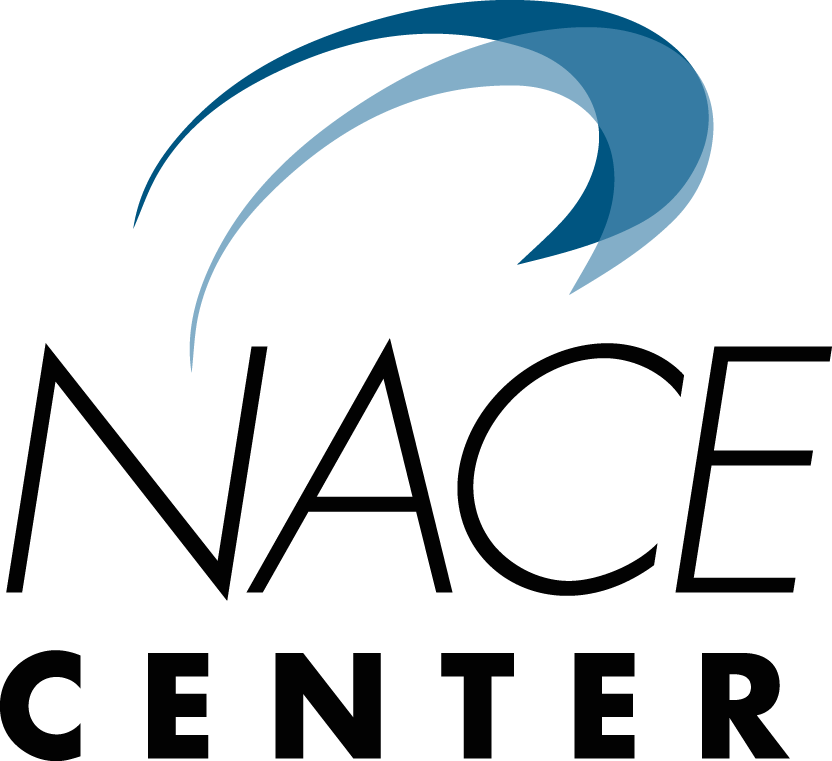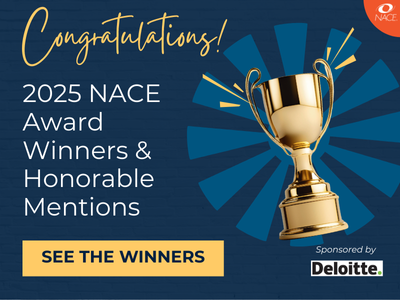NACE Journal / Winter 2025
I’ve always enjoyed working with graduating seniors, particularly those in their final semester of college. This cold January afternoon, James walked into my office with great frustration and disappointment written all over his face. He lamented, “I need to fix my resume,” as he sat down in the chair directly across from me. James had been applying to jobs since November with no luck and was convinced his application materials were holding him back. I reviewed James’ resume and cover letter carefully and told him that, “Your application materials actually look really good.” James froze, staring at me in disbelief. “Then why isn’t anyone calling me?”
Each week, I meet with students grappling with the same question: “Why am I being overlooked for so many job roles?” On paper, these applicants seem like ideal candidates, yet their inboxes remain empty. The reality is that job success often hinges on more than just qualifications; it requires professional relationships. Personal connections are undeniably pivotal to professional career success.
I believe that career services professionals must prioritize teaching students how to build social capital and cultivate ties within their chosen career fields. Career centers are uniquely positioned to bridge the gap between academia and industry. Career centers have the potential to benefit all students, but they are particularly valuable for those from low socioeconomic backgrounds.1 Networking is not just a career strategy—it’s an essential tool for creating equitable opportunities.
Many college students recognize the importance of building industry connections, yet they often find it challenging to take the first step. When surveyed about their expectations for university career centers, 64% of students prioritized recruitment events, while 62% sought assistance in securing internships.2 Resume guidance and career exploration also ranked highly, at 69% and 62%, respectively.3 These preferences reveal a pressing need for career centers to strike a balance—providing support with planning and application materials while serving as bridges to meaningful professional opportunities.
Career Centers Can Make a Difference
Building strong relationships between students and industry is necessary for all industries. Without these connections, students often resort to their existing networks for job leads.4 Considering that 80% of jobs are secured through social and professional networks, this reliance on familiar contacts can be a significant barrier for students with limited social capital.5,6 Moreover, the stakes are even higher for women and ethnic minorities, who experience disproportionately worse employment outcomes when relying solely on personal connections or limited networks.7
Students ultimately bear the burden when career centers fail to balance relationship-building opportunities with support for traditional application methods. With 70% of jobs never publicly posted, most college students are competing for less than one-third of the available opportunities. This challenge contributes to the average college graduate taking six months to secure a job.8,9 Combined with rising tuition costs and inconsistent student success outcomes, these realities have led many to question the value of a college degree.
Alarmingly, only 32% of bachelor’s degree graduates believe college is worth the investment if loans are required.10 This skepticism is unsurprising when 52% of college graduates find themselves underemployed—working in roles that neither require a degree nor use the skills gained in college—just one year after graduation.11 The sad reality is that students are losing hope, but campus career centers can make a difference. I believe that career centers can help parents and students restore confidence in the value of their education.
Note that when students engage with on-campus career centers, regardless of the specific service, it positively impacts graduate employment outcomes. Students who used their career center for at least one service received an average of 1.24 job offers, compared to 1.0 for those who didn’t.12 However, internships—essentially an extended form of networking—yield even greater benefits. Students who took part in a paid internship had an average of 1.61 job offers, compared to just 0.77 for those who forwent any internship.13
The Value of Networking—and “Weak Ties”
This raises an important question: Why is networking so essential? At its core, networking fosters "weak ties"—relationships that may not be particularly close or frequent but are incredibly valuable.14
Think of networking as stepping beyond your comfort zone and reaching outside your usual circle. By venturing into unfamiliar territory, students gain access to the resources, knowledge, and connections of their new acquaintances. But wouldn’t close connections be even more impactful than “weak ties”? After all, close connections know you better, care more deeply, and have a vested interest in your success. While this might be true, close connections often share the same networks as you do, limiting their ability to introduce you to new opportunities. In contrast, “weak ties” provide access to entirely different networks, expanding the possibilities far beyond what close relationships can offer.15
Granovetter’s “strength of weak ties” theory, proposed more than 50 years ago, raises the question: Does it still hold relevance in today’s world? Remarkably, this theory was revisited and modernized through a study analyzing the networks of more than 20 million LinkedIn users over a five-year period.16 The findings reaffirmed Granovetter's claim—weak ties had a greater influence on job mobility than strong ties.17 The research underscores the critical role of relationships in job attainment, a truth that applies equally to college students.
Strategies to Help Students Connect
The findings of the 2022 study also raise another important question: How can colleges effectively emphasize networking practices? More critically, how can universities create opportunities for students who might otherwise remain disengaged? Career centers can open doors for students to network and establish industry connections through the following initiatives:
Hosting networking events: Organize events such as alumni panels, industry mixers, and employer meet-and-greets to give students direct access to professionals in their chosen fields.
Promoting informational interviews: Encourage students to reach out to industry professionals for informational interviews, equipping them with resources and guidance to initiate these conversations effectively.
Leveraging mentorship programs: Establish formal mentorship programs connecting students with alumni or industry professionals who can provide career advice, insights, and referrals.
Providing LinkedIn training: Offer workshops to teach students how to craft a professional online presence, connect with industry professionals, and engage meaningfully on LinkedIn.
Facilitating employer partnerships: Collaborate with employers to create shadowing opportunities, internships, and co-op programs that allow students to build connections while gaining hands-on experience.
Incorporating networking into curriculum: Partner with faculty to include assignments or activities focused on networking, such as attending industry events or interviewing professionals, as part of academic coursework.
Encouraging participation in student organizations: Guide students toward joining clubs or associations tied to their career interests, as these groups often provide exposure to professionals in relevant fields.
Fostering peer connections: Remind students that networking starts on campus by connecting with peers in their programs, many of whom will become future colleagues or industry professionals.
By implementing these strategies, career centers can play a vital role in equipping students with the skills and connections they need for long-term career success.
Endnotes
1 Peng, M. & Yue, X. (2022). Enhancing Career Decision Status of Socioeconomically Disadvantaged Students Through Learning Engagement: Perspective of SOR model. Frontiers In Psychology, 13, 1-14.
2 Flaherty, C. (2023, November 30). Students Sound Off on Career Centers. Inside Higher Ed. Retrieved from www.insidehighered.com/news/student-success/life-after-college/2023/11/30/survey-what-college-students-want-career.
3 Ibid.
4 Trimble, B. & Kmec, J. (2011). The Role of Social Networks in Getting a Job. Sociology Compass, 5(2), 165-178.
5 Fisher, J. (2019). How to Get a Job Often Comes Down to One Elite Personal Asset, and Many People Still Don’t Realize It. CNBC. Retrieved from www.cnbc.com/2019/12/27/how-to-get-a-job-often-comes-down-to-one-elite-personal-asset.html.
6 Trimble.
7 Ibid.
8 Fisher
9 Bouchrika, I. (2023). Networking for College Students and Graduates in 2025. Retrieved from https://research.com/education/networking-for-college-students-and-graduates#:~:text=To%20excel%20in%20networking%2C%20students,initial%20meetings%20into%20ongoing%20relationships.
10 Fry, R., Braga, D. & Parker, K. (2024, May 23). Is College Worth It? Pew Research Center. Retrieved from www.pewresearch.org/social-trends/2024/05/23/is-college-worth-it-2/#:~:text=But%20even%20among%20four%2Dyear,a%20degree%20to%20say%20this.
11 Burning Glass Institute and Strada Institute for the Future of Work. (2024). Talent Disrupted: Underemployment, College Graduates, and the Way Forward. Retrieved from https://static1.squarespace.com/static/6197797102be715f55c0e0a1/t/65fb306bc81e0c239fb4f6a9/1710960749260/Talent+Disrupted+03052024.pdf.
12 VanDerziel, S. (2022, November). The Value of Career Services. NACE Journal. Retrieved from, www.naceweb.org/career-development/organizational-structure/the-value-of-career-services/.
13 Ibid.
14 Granovetter, M. (1973). The Strength of Weak Ties. American Journal of Sociology, 78,1360-1380.
15 Ibid.
16 Rajkumar, K., Saint-Jacques, G., Bojinov, I, Brynjolfsson, E., & Aral, S. (2022). A Causal Test of the Strength of Weak Ties. Science, 77, 1304-1310.
17 Ibid.






